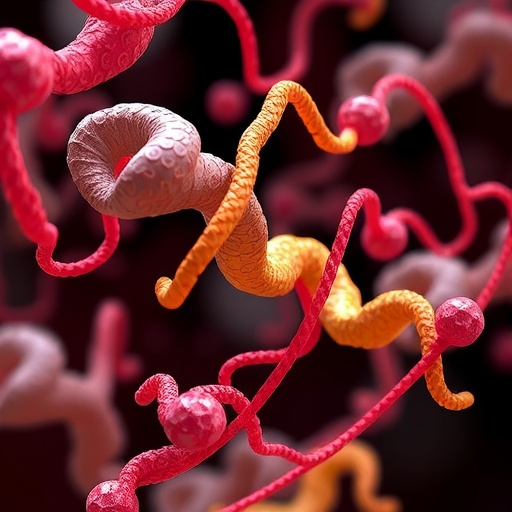In recent years, the biological significance of degrons in cellular processes has come to the forefront of molecular biology research. Degrons are specific sequences or motifs within proteins that act as signals, guiding the degradation of unnecessary or damaged proteins through the ubiquitin-proteasome system. This system is essential for maintaining protein homeostasis and regulating various cellular pathways, underscoring the importance of understanding how degrons function and their relevance in human diseases.
Degrons serve as recognition elements for E3 ubiquitin ligases, which are enzymes responsible for catalyzing the addition of ubiquitin, a small protein, to target substrates. The addition of ubiquitin marks these substrates for degradation, ensuring that only properly folded and functional proteins persist in the cell. Thus, the intricacies of how degrons are recognized and their role in substrate specificity highlight their importance in the pathobiology of various diseases, including cancer, autoimmune disorders, and neurodegenerative conditions.
Despite their critical function, the catalog of well-defined degrons remains limited, especially when juxtaposed with the approximately 600 E3 ubiquitin ligases encoded in the human genome. This gap indicates a vast territory for exploration, and researchers are now leveraging innovative high-throughput technologies to accelerate the discovery of novel degrons. These methods aim to identify both N- and C-terminal degrons, as well as internal and ubiquitin-independent degrons with high precision, thereby expanding our understanding of protein degradation mechanisms.
The advancements in degron discovery technologies are not only enhancing the identification of new degrons but also shedding light on their diverse roles in cellular regulation. Recent studies have focused on the structural and functional characteristics of these degrons, elucidating how they interact with E3 ligases to trigger the ubiquitination process. Understanding these molecular interactions provides insights into how alterations in degron activity can lead to disease states, emphasizing their importance in therapeutic development.
For instance, aberrations in degron functionality can lead to the accumulation of misfolded or damaged proteins, which is a common feature in neurodegenerative diseases such as Alzheimer’s and Parkinson’s disease. In these cases, enhancing the targeted degradation of toxic protein aggregates through the modulation of degrons presents a promising therapeutic avenue. Researchers are actively investigating small molecules that can selectively target and enhance degron activity, a strategy that leverages the natural cellular mechanisms for protein clearance.
Moreover, the therapeutic potential of degrons extends beyond the central nervous system. In cancer biology, abnormal expression or mutations in proteins that interact with degrons can result in the dysregulation of cell cycle control and apoptosis, contributing to tumor progression. Recent research has shown that restoring the functionality of specific degrons can enhance the degradation of oncoproteins, providing a novel strategy for cancer treatment. By rewiring the degradation pathways, scientists are able to influence the fate of cancer cells and potentially inhibit their proliferation.
As our understanding of the role of degrons in cellular signaling networks deepens, the scope for implementing this knowledge into clinical practice becomes more feasible. The initiation of targeted protein degradation approaches, such as the development of bifunctional molecules that can link degrons to E3 ligases, represents a cutting-edge approach in the field. These molecules promise to revolutionize how we view protein interactions within the cell, moving from classical inhibition strategies to novel degradation-based therapies.
In conclusion, the emerging field of degron research redefines the landscape of cellular regulation and therapeutic intervention. By delineating the mechanisms through which degrons govern protein degradation and their pivotal roles in maintaining cellular health, researchers are forging new pathways for disease treatment. The potential to harness the power of degrons not only sheds light on fundamental biological processes but also paves the way for innovative therapeutic strategies targeting a myriad of diseases, including cancer and neurodegenerative disorders.
As we venture further into understanding these intricate molecular signals, one thing is clear: the future of degron research holds vast possibilities that could lead to groundbreaking interventions in the realm of medicine. Continued exploration of this field will not only unravel the underlying complexities of cellular signaling but may ultimately transform how we approach the treatment of diseases rooted in protein dysregulation.
Subject of Research: The role of degrons in protein degradation and their implications in human diseases.
Article Title: Degrons: defining the rules of protein degradation.
Article References:
Zhang, Z., Mena, E.L., Timms, R.T. et al. Degrons: defining the rules of protein degradation. Nat Rev Mol Cell Biol 26, 868–883 (2025). https://doi.org/10.1038/s41580-025-00870-z
Image Credits: AI Generated
DOI: https://doi.org/10.1038/s41580-025-00870-z
Keywords: Degrons, ubiquitin–proteasome system, E3 ubiquitin ligases, protein degradation, therapeutic strategies, cancer, neurodegeneration, protein homeostasis.




